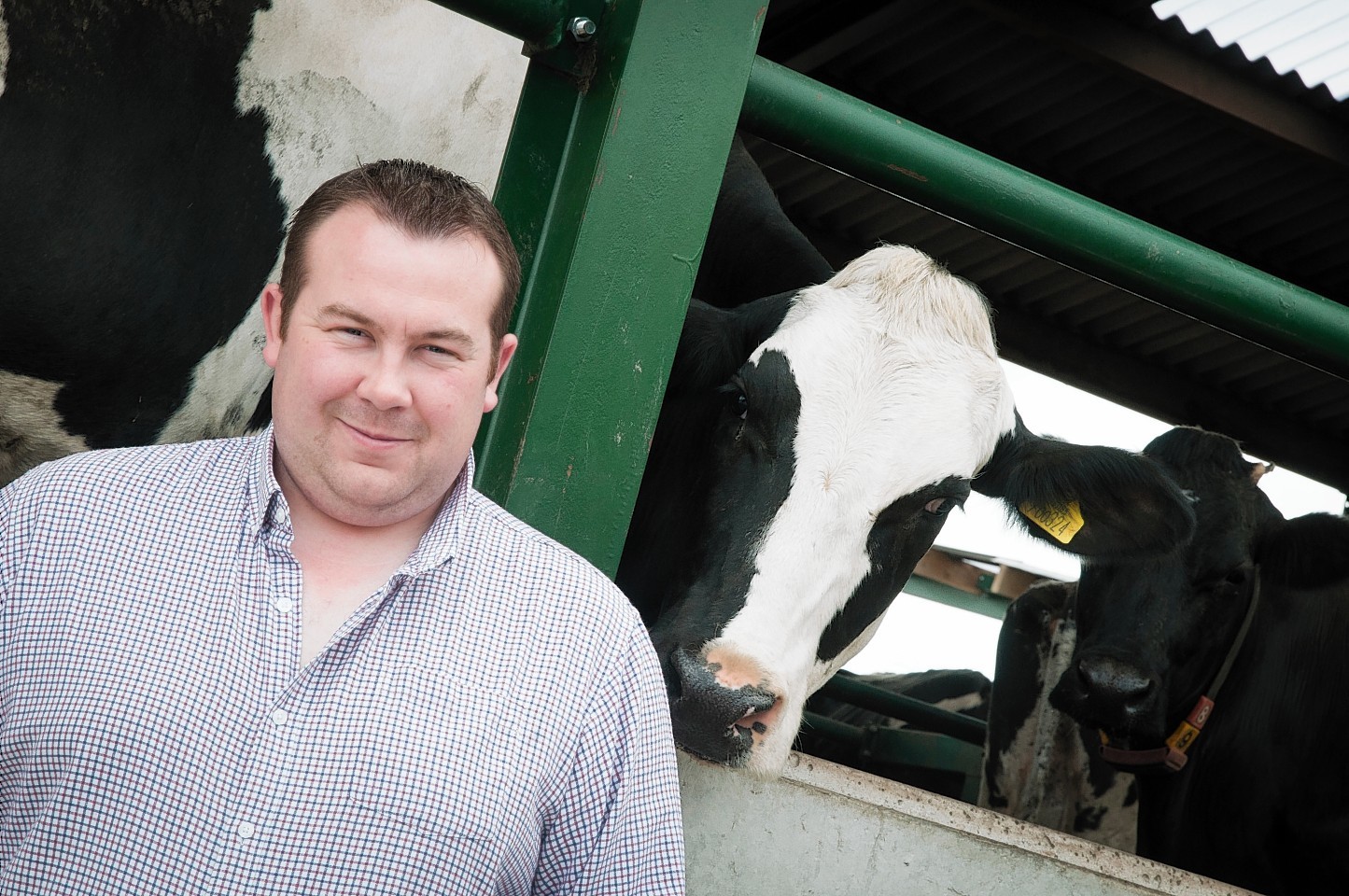Robotics have the potential to increase the viability of dairy farming in the north and north-east, according to a pioneer of hi-tech dairy farming.
Dairy farmer and consultant Tim Gibson, of Blade, North Yorkshire, said technology such as robotic milkers and automatic feeders could eliminate overhead costs and increase efficiencies, helping people stay in the industry for longer.
Mr Gibson, who farms 200 cows on 200 acres and will be adding an additional 100 cows and 150 acres to his enterprise next month, said milk production increased by almost 20% when he installed a robotic milker in 2001.
Seeing the potential benefits of the technology he added an additional two robotic milkers – enabling him to milk 24 hours a day – and installed an automatic scraper and feeding system.
While sensors on the robots identify any health issues with the cows, the automatic feeder has overhauled cattle productivity, increasing feed consumption and milk production.
“The feeder works like a sushi bar, with a conveyor belt delivering a portion of feed to cattle eight to ten times a day,” said Mr Gibson.
“Feeding little and often stimulates the cattle to feed and milk more regularly, resulting in the cows eating and additional 2 to 3kg of dry matter every day and producing more milk. It has also reduced waste hugely. Every uneaten mouthful is circulated through the system again until everything goes – we basically have nil wastage.”
Mr Gibson said the technology meant he had been able to grow the herd in a way he had never anticipated.
“I never wanted to expand the herd as we were already working all hours and I couldn’t see how we would have time to run any more animals,” he said.
“But now I’ve got two people each working a 45-hour week. On a conventional system to run an operation like this I’d need at least four people.”
If managed properly, robots can also help improve herd health, he added. Mastitis on Mr Gibson’s farm has been eliminated because the cows are handled less often which helps with hygiene and the spread of infection.
“Also the system makes the cows more relaxed, so everything works better,” he added.
“We were culling on average after three to four lactations, but our culling rate has dropped from 27 a year to around 16 (18%).”
Mr Gibson said the investment in the technology will take seven years to pay back thanks to improved output and labour cost savings.
The cows produce 15% more milk, but that improvement is swallowed by the costs of maintaining the machines, which cost about 4p a litre to buy and run.
But he said the cost of maintenance will come down as more spares become available and the market becomes more competitive.
“For me it’s more than worth the investment,” he added. “I’ve now got an efficient farm through labour-saving devices.
“Systems like this definitely have the potential to make small family farms more viable as you don’t have the overhead costs of employing weekend herdsmen.”
